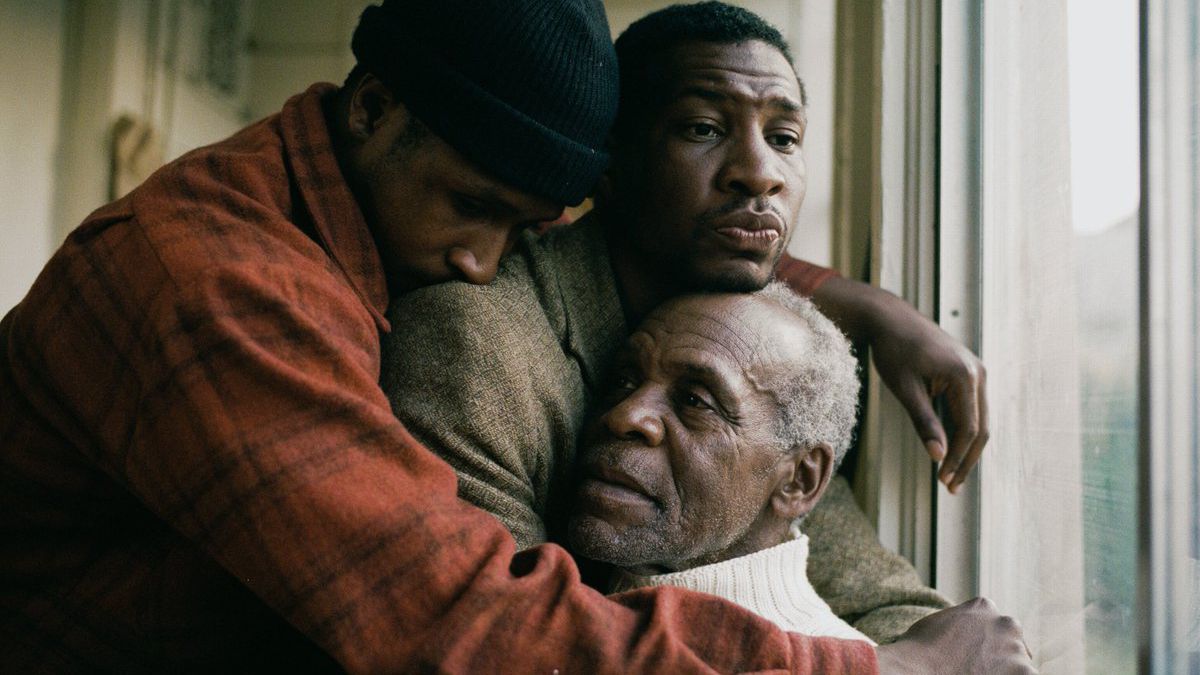The Last Black Man in San Francisco, an elegy for the idea of home and a lament for a vanishing culture in San Francisco, took this year’s Sundance directing prize for first-time filmmaker Joe Talbot and is a richly profound film and very nearly a true story.
Based on the real-life circumstances of star and Talbot’s best friend, Jimmie Fails, who with no prior acting experience gives one of the year’s best movie performances in a tender approximation of his own personal history, it’s a movie about a plan to regain his childhood Victorian home in a long-since gentrified neighborhood. Yet, much more.
Fails’ quest drives this essential document about an urban America of right now, and one about family, and how it gets made, about friendship and what constitutes a real one, about nostalgia for a romanticized past, about lineage legacies that travel from myths to accepted personal histories, and about generations of Black families who have lost considerable ground, and their homes, to rapid gentrification.
That may sound like a heavy thematic burden for any film to shoulder, but The Last Black Man in San Francisco, a wistful ballad about a head-on collision between idealism and reality, is rooted in simplicity, here the basic human needs for home and connection.
At its heart the picture is a dual love story in its ode to deep friendship and a mournful, lost love—here the stately Victorian home in which Fails was raised, purportedly built in the 1940s by his grandfather (dubbed the first Black man in San Francisco), and for which he longs to return.
The mansion, high on a hill overlooking the bay in the historic Fillmore district is, for Fails, a symbol of family history and childhood contentment before his parents split and scattered, leaving him effectively homeless.
Picture opens with skateboarding Jimmie and best friend Montgomery (Jonathan Majors), a fledgling playwright of gentle introspection clad in a signature overcoat he’ll wear throughout the picture, sharing a ride on a single board across The Golden City, the first of many contrasts illustrating the dichotomy of being have-nots in a world of escalating prosperity, and here, whiteness.
Jimmie, an orderly in a convalescent facility and Montgomery, who sells seafood in a street corner shop, share cramped quarters in the home of Montgomery’s near-blind grandfather, played with old guard salt by Danny Glover, shut in but well aware of the city’s demographic challenges for young Black men. “You two stay together,” he advises.
In his off hours, Jimmie—to the consternation of the Victorian’s haughty current owners—has made himself a permanent fixture on its grounds, a sort of informal watchdog continually freshening up its paint. But what he is actually doing is keeping it in tip top shape for his planned, future re-occupation.
Jimmie’s aim, optimistic yet self-deceiving, is to once again own the house, believing that if it would somehow empty, he could move back in (where there’s a will, there’s a way, right?). And after a domestic squabble leaves it vacant, he hastily claims the property as his own. In one heartfelt scene he unsuccessfully attempts, in all sincerity and full understanding of his economic limitations, to strike a bargain with a reticent loan officer for the now multi-million dollar property.
No matter. The pair promptly takes up residence, soon obtaining Jimmie’s childhood family furniture and returning it to its former home. This involves a side trip outside San Francisco to visit his aunt, beautifully played in two key scenes by a matter of fact Tichina Arnold, and an encounter with his estranged father (Rob Morgan) eking out a living producing counterfeit DVDs. His years gone mother will turn up later as well, in a doozy of a chance encounter.
For a while their unconventional living situation goes largely unnoticed, Jimmie and Montgomery sharing an uninterrupted peace, making small renovations and changes to their oversized abode (Montgomery claims the dining room as his bedroom). Of course, this spell will be broken, here by a realtor (Finn Wittrock, personifying detachment) who, seeing a big payday, claims the property and boots the pair from their happy home.
There’s also a Greek chorus of young, hypermasculine Black men, fixtures on the neighborhood corner in front of Glover’s home, vociferous rabble rousers who in expected homophobic taunts insinuate a sexual relationship between the two friends, which leaves them unfazed. One of these men (Jamal Trulove) longs, privately, to break free from such postures. And then tragedy strikes, giving the movie one of its most unexpectedly moving moments.
What is perhaps most special about The Last Black Man in San Francisco is its depiction of adult male friendship devoid of what one might expect of young men in an urban milieu—egocentric displays of testosterone or other toxic assertions—and characters secure in expressing the intimacy of friendship without needing to contextualize their bond as “just friends.”
Here are two characters that don’t share a bond of traditional family, but share everything else, including a small bedroom barely large enough to accommodate a twin bed, next to a fold-out on the floor, stuffed against a wall. They wake up together, manage their daily routines together, and even philosophize together as they fall asleep.
In a picture of special moments, one ranks high—the pair, Jimmie cooking breakfast while Montgomery etches a portrait in his sketchbook, happens to gaze out the window at an affluent husband and wife next door in a near same morning ritual. There’s a pointed suggestion that the friendship could, perhaps, evolve to something more. While neither has any romantic prospects and we are never clear on their orientations, it’s as close a bond of male friendship as the movies have seen in memory. In this regard, I was reminded of Steinbeck, Midnight Cowboy and even The Shawshank Redemption.
Special mention goes to the simple-hearted, devoted Majors, a well of emotions, whose third act theatrical production is a blazing, art meets life facilitator designed to strike realizations in the heart of his friend and epitomizing and the tenets of his loyalty. He’s in Fails’ corner when it counts, as when Montgomery goes to bat for his friend, alone, against Wittrock’s callousness.
Talbot, who wrote the screenplay with Rob Richert, has undoubtedly crafted an emotionally resonant film. Yet as involving as the story may be, his direction is, at times, a tad overbearing and stylized, a it too precious in its lyricism. Sometimes you wish he’d back off the moving camera (DP Adam Newport-Berra nods to Spike Lee), swelling score (robust, courtesy of Emile Mosseri) and slow motion; his story is strong enough without such pronunciations, which are flashy to a fault. Yet it should be said that he maintains an oddly symmetrical, effective relationship between a dreamlike aesthetic and realistic docudrama.
San Francisco, once a famed convergence of artists and counterculture and multiplicity, has now, like every other major American city, pushed working class folks either to the outskirts or out altogether, many once diverse neighborhoods less melting pots than a series of block-for-block, homogenous enclaves. The picture pulls no punches in its assertion that escalating real estate costs and tony developments have supplanted prior generations of city folks who built the very neighborhoods in which they can no longer afford to live. Yet this hard reality doesn’t deter Fails from his love for his home city. As he tells Thora Birch (in a late picture cameo), “You don’t get to hate it unless you love it.”
And director Talbot clearly does, incorporating many lovingly idiosyncratic touches here, from the sidewalk singing of the city’s Tim “Opera” Blevins, who contributes a touching rendition of “San Francisco” to casual nudists and a playing straight Mike Epps, who lives in his car on the streets where the distant sounds of gunfire are never out of earshot, while a street preacher (Willie Hen) warns of environmental toxicity designed to eradicate the poor. It’s quite a vision of a beloved city.
The Last Black Man in San Francisco eschews agitprop in favor of the burnished aesthetic of dreams, memories and love. And perhaps that is because Talbot believes that humanity and art have the power to carry the day, even in the midst of unfortunate truths. Like its protagonists, it’s a movie that believes in better angels, even when ambitions are continually upended. The movie’s power comes from the belief that home is where your heart lies, even if it seems your city has lost its own.
3 1/2 stars.



